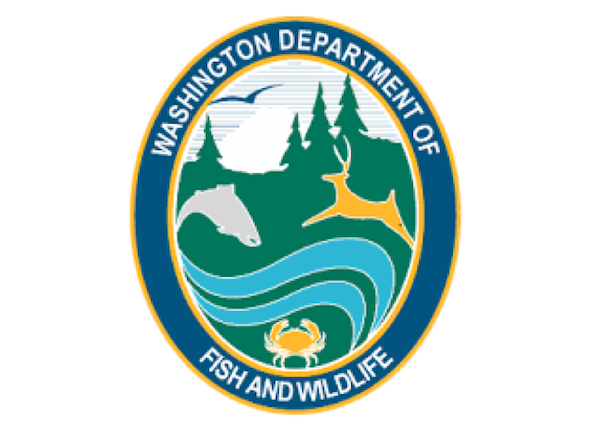Idaho Fish Report
New legislation creates 1,000-yard mandatory vessel buffer around endangered Southern Resident killer whales effective January 2025

by WA Department of Fish & Wildlife Staff
5-16-2023
Website
WDFW soliciting interest for new volunteer advisory group to inform vessel regulations outreach and education strategies
OLYMPIA – Governor Inslee has signed new legislation to create a mandatory 1,000-yard vessel buffer around Southern Resident killer whales to protect the endangered population from vessel noise and disturbance. The expanded buffer requirement goes into effect January 2025.
Senate Bill 5371, now signed into law, followed a Washington Department of Fish and Wildlife (WDFW) report released in fall 2022 that considered the effectiveness of rules for recreational boaters and commercial whale watching operators aimed at protecting Southern Resident killer whales from the effects of vessel noise and disturbance.
"The Southern Residents are part of Washington's unique identity, and their pathway to recovery requires all of us to work together," said Julie Watson, Ph.D., WDFW Killer Whale Policy Lead. "We applaud our legislative leaders for recognizing what's at stake for this endangered population and taking action to better protect Southern Residents."
In addition to initiating the mandatory 1,000-yard buffer for recreational boaters starting in January 2025, the bill includes direction for amplified communications and outreach to enhance public awareness and compliance with the regulations. The new law also modifies how WDFW licenses commercial whale watching and sea kayak tour companies, including streamlining fees for commercial operators. It includes distinctions for sea paddle operations in relation to motorized commercial whale watching, and it makes changes to the enforcement statute that better align with how WDFW enforces other natural resource offenses.
Center for Whale Research's July 2022 census recorded the Southern Resident killer whale population at just 73 individuals. Listed as endangered under the Endangered Species Act in 2005, the Southern Residents face three main threats: lack of food, contaminants in their food, and vessel noise and disturbance. The latter affects how the whales forage and communicate using echolocation.
Join WDFW's new Orca Regulations Communications Advisory (ORCA) Group
The new law directs WDFW to form a volunteer advisory group to inform the development of outreach and education strategies to implement the actions outlined in the law. The group will include representatives from the recreational boating, commercial whale watching, and commercial fishing communities, as well as ports and marinas, government entities, tribes, and researchers. The group will meet for the first time in summer 2024 and will sunset in summer 2025.
Information about joining the ORCA Group will be made available on the WDFW website. Those interested in joining should review the Orca Regulations Communications Advisory Group webpage, online interest form, and the WDFW Advisory Member Handbook. WDFW is accepting submissions through June 9.
Current Be Whale Wise regulations
Although changes to the vessel buffer won't take place until 2025, wildlife managers are encouraging boaters to give Southern Resident killer whales as much space as possible.
"The Southern Resident orcas need our help now, and reducing vessel traffic near the whales provides an immediate benefit," said Watson. "Every boater that slows down, stays back 1,000 yards, and avoids approaching the whales is in that moment giving a Southern Resident orca a better chance of catching the salmon it needs to meet its daily caloric needs, or to share with a calf to improve its odds of survival."
Current law requires recreational vessels to stay at least 300 yards from Southern Resident killer whales and at least 400 yards out of the path in front of and behind the whales. Vessels must also reduce their speed to seven knots within one-half nautical mile (roughly 1,000 yards) of Southern Residents. More information is available on the Be Whale Wise website.
"The 1,000-yard restriction applies exclusively to the endangered Southern Resident killer whale population," explained Watson. "For other killer whales encountered in the inland waters of Washington, like Bigg's transient killer whales, boaters and commercial whale watching operators will need to continue to follow federal law specifying vessels must remain at least 200 yards away."
Viewing Washington marine life
WDFW reminds the public that there are several options to view the Southern Residents without operating your own watercraft. Whale watching tours provide abundant opportunities to see many kinds of whales, including orca, humpbacks, gray whales, and minke whales. Commercial whale watching operators are trained in determining the species being viewed and judging distances over water, and they know how to provide quality whale watching experiences without getting within 1,000 yards of Southern Residents.
"If your heart is set on seeing Southern Resident killer whales, viewing from shore may actually be your best option," says Watson. "Shore-based viewing is a great way to experience Southern Residents and other marine life– sometimes even closer than you would on the water– with less risk to the animals."
More information, including optimal locations for shore-based viewing across Puget Sound and the Washington coast, is available on The Whale Trail's website.
Current rules for Southern Resident killer whale commercial viewing and more information about the Department's Commercial Whale Watching Licensing Program are available on WDFW's website.
The Washington Department of Fish and Wildlife works to preserve, protect and perpetuate fish, wildlife and ecosystems while providing sustainable fish and wildlife recreational and commercial opportunities.

